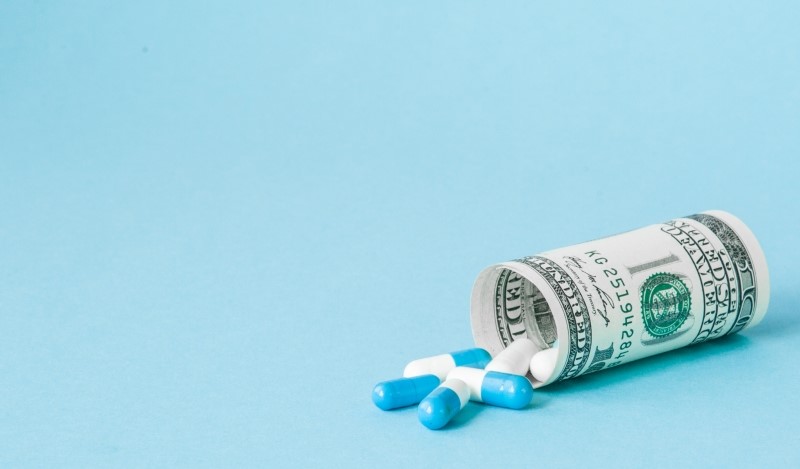
Experts debate the role of pharmacy benefit managers in rising U.S. drug prices.
In the controversy over surging U.S. drug prices, policymakers have recently focused on companies involved in negotiating drug costs between insurers and manufacturers—or, pharmacy benefit managers.
With new legislation brewing in the U.S. Congress, experts are debating a seemingly straightforward question: Do pharmacy benefit managers lower drug costs? Some evidence shows that pharmacy benefit managers place upward pressure on prices, but other evidence suggests that prices would be even higher without them.
Pharmacy benefit managers first emerged in the 1960s to help health insurance companies manage new prescription drug benefits that the Medicare and Medicaid Act of 1965 had established. Since then, pharmacy benefit managers have expanded their services and now manage prices and payments for all entities involved in prescription drug transactions.
Three key entities make up the U.S. drug supply chain: manufacturers that produce drugs, wholesalers that distribute these drugs, and retailers that sell the drugs to consumers. Drug manufacturers tend to sell directly to wholesalers, which in turn typically sell to retailers, such as pharmacies.
But partly due to rising costs of prescription drugs, most consumers do not simply purchase the drugs they need from retailers. Instead, under a health insurance plan, most consumers either pay a fixed amount for prescriptions or pay toward their plan’s spending cap. Insurers then cover any remaining costs, giving them a stake in drug prices.
Insurers typically lack the size and power that they need to negotiate directly for lower prices with drug manufacturers. Since the 1990s, the leading 60 U.S. pharmaceutical companies have merged into only 10 firms. Just four of these companies produce more than half of all U.S. generic drugs. By comparison, the largest national insurer only represents one in every eight consumers.
This discrepancy in negotiating power is where companies that serve as pharmacy benefit managers assist.
These companies rebalance drug price negotiations by representing multiple insurers in negotiations with drug manufacturers and pooling their market power. For example, the three largest pharmacy benefit managers oversee around 70 percent of all prescription drug claims.
Pharmacy benefit managers profit in two ways. First, they charge insurers directly for their services. Second, insurers may allow these managers to keep a portion of the savings that they negotiate.
This second kind of income is, however, a source of controversy over pharmacy benefit managers. In many cases, rather than asking for lower drug prices, pharmacy benefit managers request a share of the manufacturer’s proceeds for each time consumers purchase the manufacturer’s drugs. These payments are called rebates.
In most settings, rebates are payments made by a manufacturer back to a consumer. But the drug market is somewhat different.
A drug manufacturer will typically give these rebates to the pharmacy benefit manager rather than to the consumer. In exchange, the pharmacy benefit manager agrees to encourage the consumers it represents to purchase the manufacturer’s drug instead of generics or drugs from other brands.
In this arrangement, the manufacturer sells more drugs, and the pharmacy benefit manager earns more profit. Rebates to pharmacy benefit manager now account for around one-fifth of all drugs expenditures in the United States.
Despite their powerful role in drug price negotiations with manufacturers, pharmacy benefit managers do not typically share pricing information, even with insurers. Pharmacies, insurers, and wholesalers similarly hesitate to divulge information that might lessen their competitive advantage. The lack of price transparency among pharmacy stakeholders contributes to the confusion around recent increases in drug prices. For example, between 1996 and 2017, the price of insulin in the United States increased by more than 800 percent. Industry players blame each other for this dramatic spike, but without publicly available pricing data, lawmakers and the public cannot accurately assess which actors are driving costs.
Insulin is just one example of recent drug price increases.
Among name-brand drugs, average list prices—the prices that manufacturers “list” before the sale price is negotiated—have increased 5 percent to 10 percent annually for the last five years. Some say the rapid growth of rebates explains, in part, this change. And though most insured consumers ultimately pay a lower, negotiated price, consumers who are uninsured or under-insured have no such privilege.
Critics argue that the rebate system gives pharmacy benefit managers an incentive to maximize profits by increasing rebate amounts. They say that to satisfy pharmacy benefit managers, manufacturers raise their drugs’ list prices, so they can offer larger rebates to pharmacy benefit managers without losing profits. Although insurers typically pay the list price for drugs, these experts say this arrangement is still beneficial because insurers receive a portion of the pharmacy benefit managers’ rebates. Furthermore, insurers can pass excess costs along to their insured consumers by raising the costs of their services to account for the increased costs for drugs.
In the last year, four states have separately sued the three largest pharmacy benefit managers, alleging that they drove up drug prices by demanding increased rebates. Experts expect that state legislatures will expand on existing pricing regulations following a recent U.S. Supreme Court ruling. In that case, the Court held that state regulations do not have to yield to federal law unless they directly impact the uniform national administration of federal health care laws. And this year alone, congressional lawmakers have voted to advance five bills related to pharmacy benefit managers, all focused on increasing price transparency.
Yet some experts argue that pharmacy benefit managers’ role in rising drug prices is overblown and misunderstood. For example, one recent study suggested that patent protections and consumer preferences for certain brand allow manufacturers to raise prices without losing customers. Another group of scholars recently argued that pharmacy benefit managers actually lower drug costs and help consumers save money by increasing the use of generic drugs.
Even some experts who are skeptical of pharmacy benefit managers argue that transparency legislation will have little effect on drug prices. Worse, it may backfire by removing pharmacy benefit managers’ incentive to negotiate for the good of consumers. Antitrust authorities have also long argued that prices will rise if industry players are required to disclose pricing data because pharmacy benefit managers consider this information to be trade secrets.
This conflicting evidence presents a curious dilemma for lawmakers. Lawmakers need transparency to lower drug prices, but obtaining this transparency may ultimately drive up prices. As can be the case with other aspects of the U.S. health care system, there may be no simple answers.



